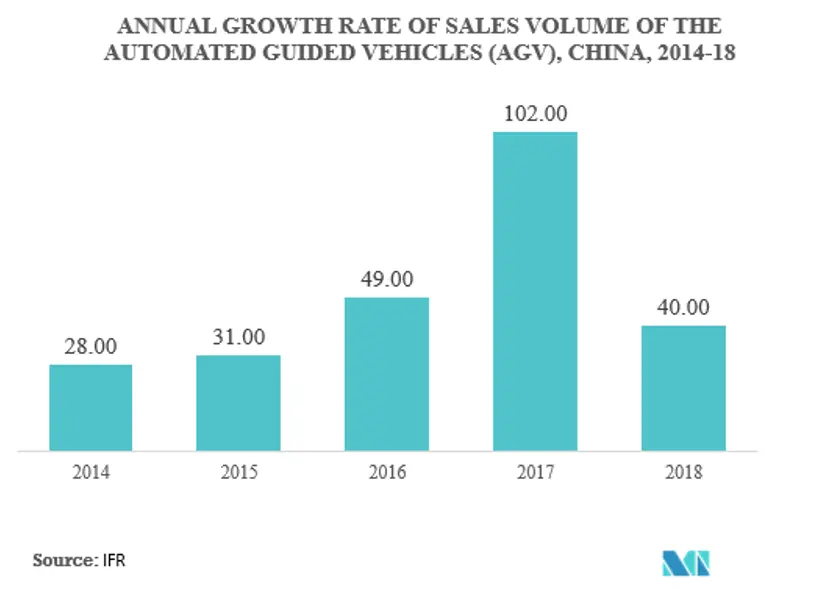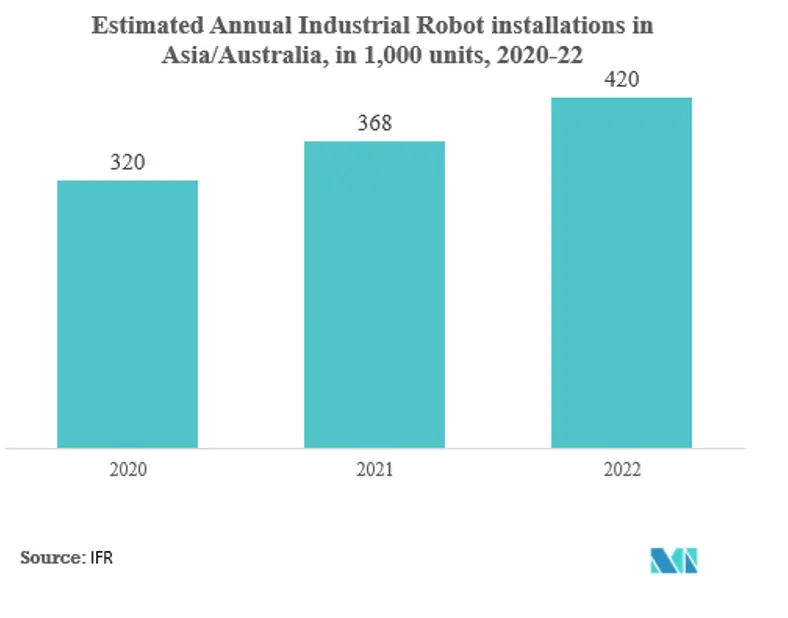Market Trends of APAC Service Robots Industry
This section covers the major market trends shaping the APAC Service Robots Market according to our research experts:
Logistic Systems is Expected to Witness Significant Growth Rate
- Autonomous guided (AGV) vehicles in manufacturing and non-manufacturing environments, cargo handling, outdoor logistics, and personal transportation (AGV for persons), among others, are some of the major service robots considered in the scope.
- The demand for service robots in the logistics industry is on the rise, owing to the growing e-commerce sector, followed by industries' increasing efforts to reduce the labor cost and optimize the processing speed.
- Robots have been paving their way into the logistics industry and warehouses for material handling. The advent of technologies such as AGV and automation has been aiding their growth.
- The primary application of logistics service robots is mobile AGVs in warehouses and storage facilities to transport goods. For instance, Singapore Technologies Engineering developed robots that can operate in warehouses, factories, and other spaces, in the logistics sector.
- The five machines developed by the company, collectively known as STrobo, consist of pallet trucks and stackers, tow tractors, forklifts, and trucks that can operate in very narrow aisles, all suited to perform repetitive material handling tasks.
- In December 2019, Logistics and supply chain technology startup Plus Automation won its first robotics-as-a-service contract with Jun Co, a Japanese company with diversified interests, including fashion, food, and fitness products.
- The company was jointly established in June 2019 and is 60% owned by Mitsui, a Japanese conglomerate, and GLP Japan, one of the largest Japanese logistics companies and has real estate and other interests. The contract between Plus and Jun consists of a standard annual subscription and the option to add robots when cargo volumes increase, making it a highly convenient service package.

China to have a Dominant Market Share
- China is anticipated to hold a prominent share for service robots in the region. According to the Chinese Institute of Electronics, China's service robot market accounts for more than a quarter of the global market and is expected to exceed USD 4 billion in 2020. The institute's research shows that the global robot market in 2019 was around USD 29.41 billion, among which service robot accounted for USD 9.46 billion, a Y-o-Y increase of 14.1%.
- The Chinese government has ambitious plans for the country's robotics industry. The government has listed the robotics industry and AI and automation as one of the priority sectors for high-end development to push forward the transformation and upgradation of the manufacturing industry.
- Unmanned and automated restaurants are starting to emerge in China. Chinese online retailer JD opened its first "JD X future" restaurant in Tianjin in November 2019 and plans to open 1,000 more by 2020. The restaurant is fully staffed by robots that take orders, serve food, and prepare meals, managed by a central AI system.
- In July 2020, Chinese e-commerce giant Alibaba opened its automated restaurant, called "Robot.he," inside its Hema supermarket. It plans to expand overseas. Popular hot-pot restaurant chain Haidilao equipped a Beijing branch with robotic arms in their cold rooms and transportation robots.
- In September 2020, The robot barista was launched by Chinese robotics maker OrionStar in Beijing. The Chinese firm and other industry experts are expecting demand for service robots like the coffee maker to rise in the aftermath of the COVID-19 pandemic as businesses look to automation to reduce the risk of transmission of the virus and workforce costs.
- The company, which has deployed some 11,000 robots across China as of May 2020, expects service robots to grow mainly in the next three to five years as a result of the pandemic and rising labor costs in the country.


